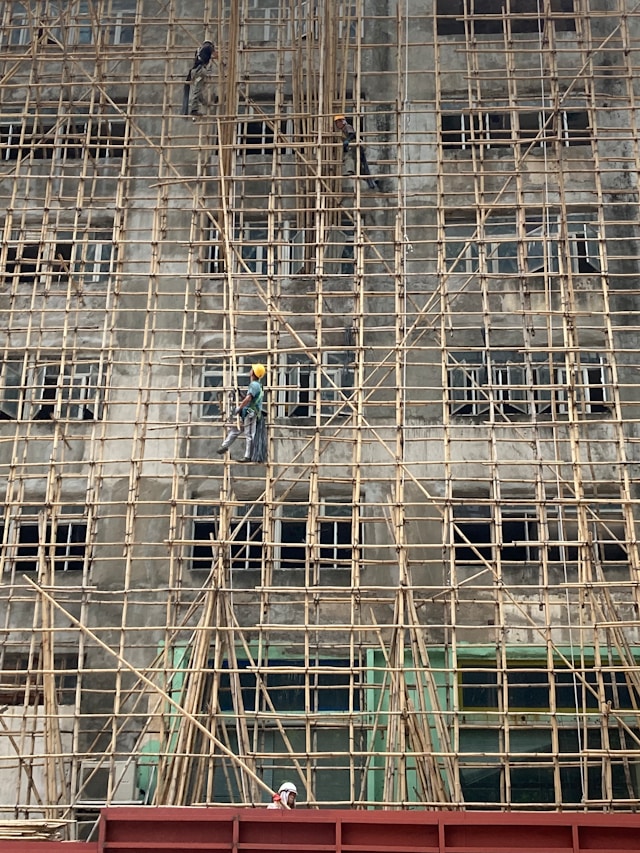
Minnesota has emerged as a rare housing-market success story in the Midwest, earning national attention for keeping affordability within reach while steadily increasing new home production. According to the latest Realtor.com® State-by-State Housing Report Card, the state scored a B-, outperforming many regions struggling with soaring prices, tight supply, and sluggish construction. The report—part of the Let America Build campaign—evaluates how well states balance present-day affordability with long-term housing development.
.jpg)
Minnesota’s rating reflects a market that, while not immune to rising prices and inflation, has managed to keep production strong enough to prevent the steep affordability declines seen in states with far faster population growth.
National leaders have also been sounding alarms about the need for more construction. President Donald Trump, in an October post on his Truth Social platform, criticized major builders for holding undeveloped lots during a nationwide housing shortage. “They’re my friends ... but now, they can get Financing, and they have to start building Homes. They’re sitting on 2 Million empty lots, A RECORD,” Trump wrote, urging Fannie Mae and Freddie Mac to “get Big Homebuilders going” to “restore the American Dream.”
In that national context, Minnesota stands out as a state that is at least maintaining a workable balance—though experts warn that progress could slip without more aggressive policies.
Realtor.com’s assessment places Minnesota in the upper half of all states, with a total score of 62. The state’s median listing price of $394,042 aligns with one of the region’s strongest median household incomes at $86,272, giving Minnesotans more purchasing power than many neighboring states.
The Realtors Affordability Score of 0.77 suggests that a notable share of homes remain in reach for middle-income households—even as affordability weakens nationwide.
On the development side, Minnesota accounted for 1.5% of U.S. housing permits in 2024, slightly below its 1.7% population share, producing a permit-to-population ratio of 0.9. That indicates a relatively stable pace of construction, though analysts point out that the state will need to expand permitting further to prevent future shortages.
The new construction premium of 47.1%—the cost difference between new and existing homes—is high but typical for the Midwest, where new homes tend to feature larger footprints, energy-efficiency upgrades, and higher-quality amenities.
The Realtor.com New Construction Insights report shows that new construction nationally is helping relieve pressure on home prices. The median new-home price held firm at $450,797, while resale prices climbed 2.4%, narrowing the price gap between the two to the lowest ever recorded: just 7.8%.
The Midwest follows a similar pattern, with moderate growth, manageable inflation, and enough available land to sustain steady building. Even so, rising material costs and persistent labor shortages threaten to constrain future output.
These challenges are not unique to Minnesota—but they are becoming more pronounced as demand grows.
As the National Association of Realtors® notes, the scale of the national housing shortfall requires continued investment. “America is short more than 4.7 million homes, and every new home built helps close that gap while fueling local economies,” says Shannon McGahn, executive vice president and chief advocacy officer at NAR. "NAR research shows that the U.S. has faced a persistent housing shortage for more than a decade, driving up prices and limiting options for buyers. Expanding housing supply creates jobs, supports small businesses, and affords families the opportunity to build generational wealth.”
Despite Minnesota’s relatively strong rankings, Gov. Tim Walz and state leaders are facing increased pressure to go further. Housing advocates, lawmakers, and industry groups argue that Minnesota cannot rely on past performance as population growth and migration trends increase demand.

The centerpiece of Minnesota’s recent housing debate has been the Minnesota Starter Home Act, part of the broader “Yes to Homes” agenda. The proposal sought to expand the availability of entry-level homes by relaxing zoning restrictions and reducing development barriers, making it easier for builders to deliver smaller, more affordable homes.
Housing Committee Co-Chair Spencer Igo (R–Wabana Township) emphasized the urgency during session debates. “There’s no one who can say we don’t have a problem,” Igo said. “The bill is getting at how we used to do things… it’s core to what we believe in as Minnesotans and Americans.”
The bill passed its first key committees with bipartisan support but stalled when the House Local Government Committee declined to hear it. A modified version later came before the Senate Local Government Committee, where it was defeated 5–6. With little additional backing from Walz or legislative leaders, all four remaining “Yes to Homes” bills lost momentum as well.
Some targeted proposals have advanced, however. Rep. Andrew Myers (R–Tonka Bay) introduced bills HF177 and HF178 to reduce construction costs for first-time homeowners by refunding sales taxes on materials used in new builds valued up to $165,000 of material costs. Myers said the goal is to “address the lack of supply and affordability of homes for first-time buyers by getting builders to invest in model homes and then find qualified buyers.”
Under the plan, builders would pass the savings directly to new homebuyers through lower sale prices.
For now, the state’s housing market remains more stable than most. Affordability is stronger than the national average, construction remains active, and policymakers are continuing to introduce new ideas aimed at boosting supply.
But economists note that Minnesota’s progress could easily slip. Without further investment in infrastructure, permitting reform, and zoning changes, the pace of construction could stagnate—placing Minnesota on the same path as many states now struggling with soaring prices.
The next phase of Minnesota’s housing stability will depend heavily on how Gov. Walz and lawmakers approach the upcoming legislative session and whether Minnesota chooses to capitalize on its strong foundation—or risks falling behind.
Originally reported by The Realtor.com Team